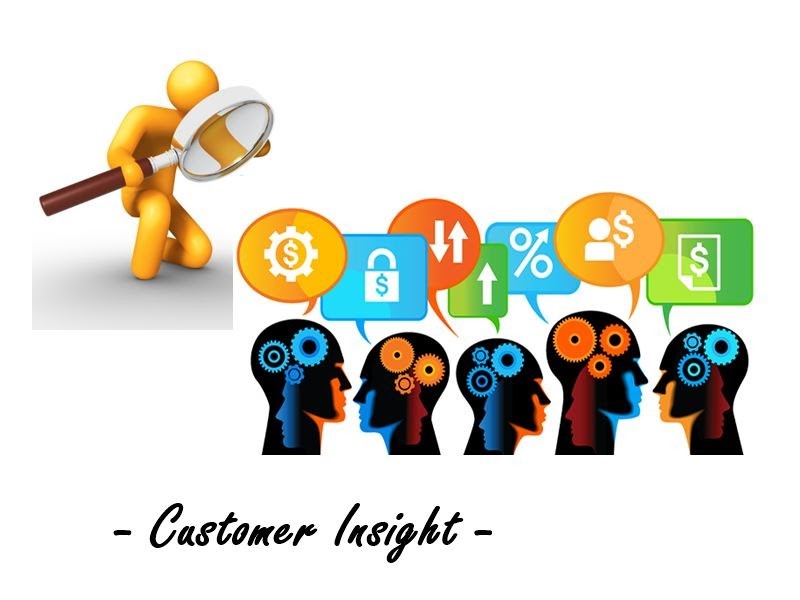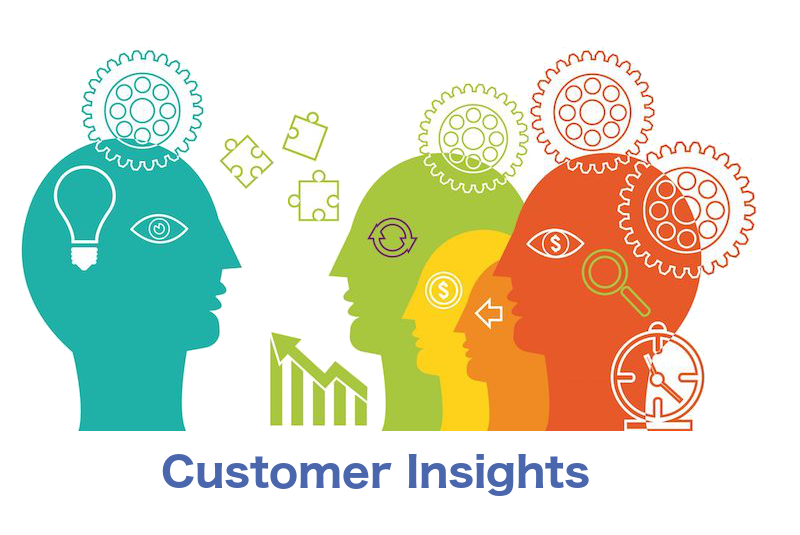In the dynamic landscape of business, understanding your customers is not just an advantage; it’s a necessity. Customer insight is the key that unlocks the door to the minds and behaviors of your clientele. In this article, we delve into what is customer insight, exploring its definition, significance, tools for gathering information, and its transformative impact on business strategies.
What is Customer Insight?

1. Definition of Customer Insight
Customer insight goes beyond mere data collection; it involves understanding the motivations, preferences, and behaviors that drive customer decisions. It is a holistic approach to comprehending your audience on a deeper level.
2. Importance in Business
Customer insight is a strategic asset. Businesses that prioritize understanding their customers gain a competitive edge, enabling them to tailor products and services to meet specific needs. It influences decision-making, marketing strategies, and overall business direction.
Understanding Customer Behavior
1. Analyzing Purchase Patterns
Understanding what, when, and how customers buy provides invaluable insights. Analyzing purchase patterns helps businesses anticipate demand, optimize inventory, and enhance the overall customer experience.
2. Tracking Customer Interactions
Every interaction a customer has with a brand tells a story. From website visits to social media engagement, tracking these interactions unveils valuable information about preferences, pain points, and areas for improvement.
3. Identifying Decision-Making Factors
Customer insight involves identifying the factors that influence purchasing decisions. Is it price, brand reputation, or convenience? Knowing these factors empowers businesses to craft targeted strategies.
Tools for Gathering Customer Insight
1. Surveys and Questionnaires
Traditional yet effective, surveys and questionnaires allow businesses to directly ask customers about their experiences, preferences, and suggestions. The key lies in crafting well-designed, targeted questions.
2. Social Media Listening
In the age of social media, customers freely express their opinions. Social media listening tools help businesses monitor and analyze these conversations, providing real-time insights and sentiment analysis.
3. Customer Feedback Platforms
Dedicated platforms for customer feedback enable businesses to collect and analyze opinions systematically. These platforms often include features like ratings, reviews, and open-ended comments.
Utilizing Data Analytics
1. Big Data for Customer Insight
Big data analytics processes vast amounts of customer data, revealing patterns and trends that may be impossible to identify manually. It’s a powerful tool for predicting future behavior and preferences.
2. Predictive Analytics
Predictive analytics uses historical data to forecast future trends. Businesses can anticipate customer needs, enabling proactive rather than reactive strategies.
3. Customer Segmentation
Segmenting customers based on demographics, behavior, or preferences allows for targeted marketing and personalized experiences. It’s about treating different customer segments uniquely.
Personalization in Customer Experience
1. Tailoring Products and Services
Armed with customer insights, businesses can tailor their offerings to better meet customer needs. Personalized products and services create a stronger connection between the brand and the customer.
2. Customized Marketing Strategies
Customer insight guides the creation of marketing strategies that resonate with specific target audiences. Tailoring messages and channels increases the likelihood of engagement and conversion.
3. Impact on Customer Loyalty
When customers feel understood, they are more likely to remain loyal. Customer loyalty is a direct result of businesses consistently meeting and exceeding customer expectations.
Challenges
1. Privacy Concerns
As data collection intensifies, privacy concerns grow. Balancing the need for customer insight with respect for privacy is a delicate challenge that businesses must navigate.
2. Data Accuracy and Reliability
Inaccurate data can lead to misguided strategies. Businesses need to invest in systems that ensure the accuracy and reliability of the customer data they collect.
3. Overcoming Resistance to Feedback
Not all customers are willing to provide feedback. Businesses need strategies to encourage customers to share their thoughts and experiences willingly.
Benefits for Businesses
1. Improved Decision-Making
Informed decisions are at the core of successful businesses. Customer insight provides the foundation for strategic choices that resonate with the target audience.
2. Enhanced Customer Satisfaction
Meeting customer expectations leads to satisfaction. Businesses that actively seek and apply customer insight are better equipped to exceed those expectations.
3. Competitive Advantage
In a saturated market, understanding your customers sets you apart. A deep understanding of customer needs allows for the development of unique value propositions.
Future Trends
1. Artificial Intelligence Integration
AI is revolutionizing customer insight by automating processes, providing real-time analysis, and predicting future trends more accurately.
2. Real-Time Customer Feedback
The future of customer insight lies in real-time feedback. Businesses are adopting tools that enable immediate responses and adjustments based on customer interactions.
3. Continuous Evolution of Strategies
The world changes, and so do customer preferences. Businesses need to embrace a mindset of continuous improvement in their customer insight strategies.
Actionable Tips for Implementing Customer Insight
1. Establishing a Feedback Loop
Creating a seamless feedback loop ensures that customer insights are not just gathered but also acted upon. This iterative process leads to ongoing improvements.
2. Training Teams for Insight Utilization
It’s not just about collecting data; it’s about interpreting and using it. Training teams to leverage customer insights in their roles is critical for success.
3. Regularly Updating Customer Personas
Customer personas evolve. Regularly updating them ensures that strategies remain aligned with the current needs and preferences of the target audience.
Importance of Feedback Culture
1. Encouraging Customer Feedback
A culture that encourages and values customer feedback fosters a stronger connection between the brand and its audience. Customers feel heard and appreciated.
2. Employee Involvement in the Process
Employees at all levels should be involved in the customer insight process. Frontline staff often have valuable insights and can provide a unique perspective on customer interactions.
Measuring the Effectiveness of Customer Insight
1. Key Performance Indicators
Establishing KPIs allows businesses to measure the impact of their customer insight strategies. Metrics like customer satisfaction scores and retention rates are crucial indicators.
2. Adapting Strategies Based on Feedback
Flexibility is key. Businesses must be willing to adapt their strategies based on the feedback received. This responsiveness ensures that the customer remains at the center of decision-making.
Realizing the Long-Term Value
1. Sustainable Customer Relationships
Customer insight isn’t just about short-term gains. It lays the foundation for long-term, sustainable relationships with customers, turning them into brand advocates.
2. Adapting to Changing Market Trends
Business landscapes evolve, and so do customer expectations. The ability to adapt to changing market trends ensures that businesses stay relevant and continue to meet customer needs.
Case Studies with Record-Breaking Results
1. Spotify: Personalization at Scale Spotify’s success story is a prime example of using customer insight to deliver a highly personalized experience. By analyzing user listening habits, preferences, and behaviors, Spotify creates personalized playlists like “Discover Weekly,” which keeps users engaged. This deep understanding of its customers has led to record-breaking user retention rates and has positioned Spotify as a leader in music streaming. In 2023 alone, Spotify reached over 515 million monthly active users, a testament to the power of personalized customer experiences.
2. Coca-Cola: Leveraging Customer Feedback for New Product Development Coca-Cola’s “Freestyle” vending machines provide a unique experience where customers can mix their own flavors. The company used this data to identify popular combinations, leading to the launch of new products like Cherry Sprite. By listening to customer preferences, Coca-Cola not only innovated its product line but also strengthened brand loyalty, driving a 30% increase in sales of Freestyle-exclusive flavors.
3. Amazon: Optimizing the Customer Journey with Data Amazon is a master at using customer insight to refine its customer journey. Through analyzing customer behavior, such as browsing patterns, purchase history, and even delivery preferences, Amazon continuously improves its recommendations engine and fulfillment processes. This has resulted in unprecedented customer satisfaction levels and a market dominance that few companies can rival. In 2022, Amazon’s Prime membership surpassed 200 million, showcasing the effectiveness of data-driven strategies.
Influencer Insights: Tweets and Quotes
Gary Vaynerchuk (@garyvee), Entrepreneur and Marketing Expert: “The companies that are winning are the ones that truly know their customers. It’s not just about selling a product anymore; it’s about understanding people’s emotions and behaviors.”
Gary’s perspective emphasizes the emotional connection that businesses need to foster through customer insight. His focus on “understanding people” speaks directly to the need for businesses to move beyond just data and build real relationships with their audience.
Ann Handley (@MarketingProfs), Digital Marketing Pioneer: “Customer insight is the bridge between what your brand thinks and what your customer wants. The better you know them, the more likely you are to create an experience that feels personal and valuable.”
Ann highlights the importance of customer insight as the link between brand strategy and customer desires. Her emphasis on creating valuable experiences reinforces the idea that personalized marketing is key to long-term success.
Neil Patel (@neilpatel), Digital Marketing Guru: “If you’re not paying attention to your customer data, you’re making decisions in the dark. Customer insight illuminates the path to a better business strategy.”
Neil Patel underlines the critical role that data plays in guiding business decisions. His analogy of “making decisions in the dark” reinforces the necessity of leveraging customer insights for strategic clarity.
Conclusion
In conclusion, customer insight is the heartbeat of successful businesses. It’s not just about gathering data; it’s about understanding the people behind the numbers. By investing in robust strategies, tools, and a culture that values customer feedback, businesses can navigate the ever-changing landscape with confidence.
Ready to revolutionize your approach to customer insight? Request a demo from AIM Technologies today. See firsthand how our advanced solutions can empower your business with unparalleled customer understanding and strategic advantage.
FAQs
What is the primary goal of gathering consumer insight?
- The primary goal is to understand customer behaviors, preferences, and motivations to make informed business decisions.
How can businesses overcome privacy concerns when collecting data?
- Implement transparent data collection practices, prioritize data security, and offer clear opt-in/opt-out choices to customers.
Is consumer insight only relevant for large corporations?
- No, businesses of all sizes can benefit from customer insight. Understanding your customers is essential for success, regardless of scale.
What role does AI play in enhancing customer insight?
- AI automates data analysis, provides real-time insights, and enhances predictive capabilities, making customer insight more efficient and accurate.
Can businesses benefit from customer insight without sophisticated analytics tools?
- Yes, businesses can start with basic tools like surveys and social media listening. However, sophisticated analytics tools offer deeper insights for strategic decision-making.




